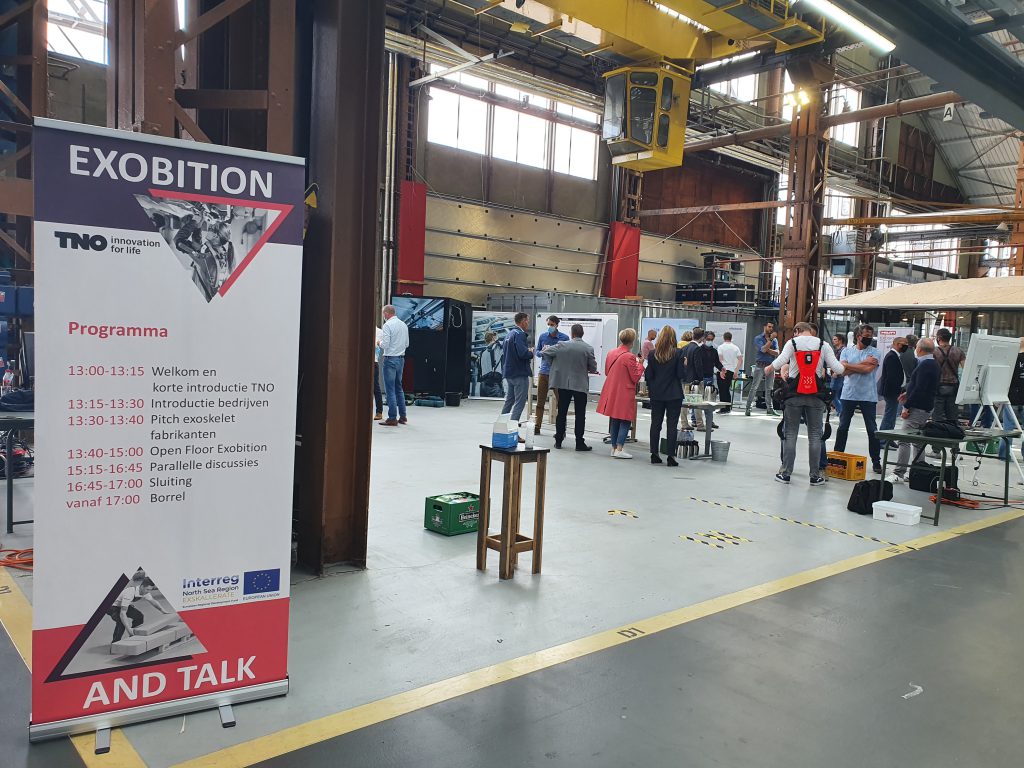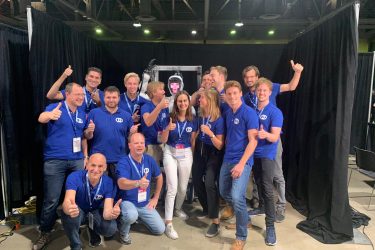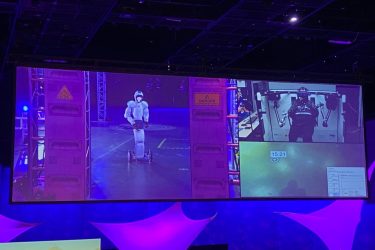a workshop to identify challenges for exoskeleton implementation
Background
On the 24th of June , TNO organized the workshop “Exobition and Talk” in Rotterdam. This workshop was organized within the international Exskallerate project, which has the overall objective to accelerate the adoption of exoskeletons into construction and industry. To reach that goal, one of the main activities in this project is the organization of workshops in which exoskeleton developers and new adopters and scientists will meet to find-out, discuss and tackle barriers for exoskeleton adoption. The general objective of these workshops is to address barriers that stand in the way for companies to adopt exoskeletons.
Aim of the workshop
The workshop “Exobition and Talk” aimed at increasing awareness of exoskeletons at companies and gathering insights from companies about their challenges and requirements for successful adoption of exoskeletons. Especially small and medium-sized enterprises (SME’s) are often unaware of exoskeletons as an available solution for heavy work in their working environment. Specifically, this workshop was organized to:
- Connect exoskeleton developers with companies interested in exoskeletons
- Identify and discuss challenges and barriers for implementation of exoskeletons
- Share the knowledge of TNO on potential benefits of exoskeletons in industry
Participants
Exokeleton developers
Six of the main exoskeleton developers in Europe joined this workshop. The following back an arm exoskeletons were presented:
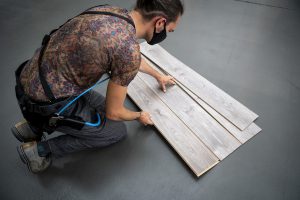
Laevo V2, passive back exoskeleton
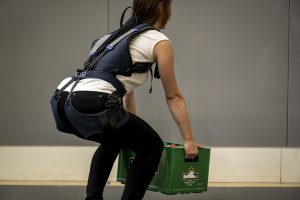
Lift Suit, passive soft back exoskeleton
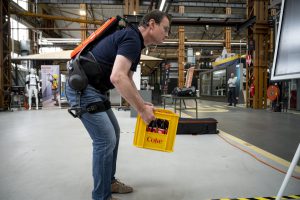
Cray-X, active back exoskeleton
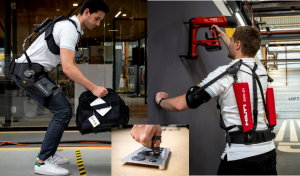
Paexo Back, passive back exoskeleton
Paexo shoulder, passive arm exoskeleton
Paexo thumb, thumb exoskeleton
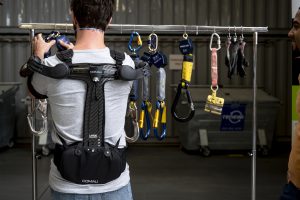
Comau Mate, passive arm exoskeleton
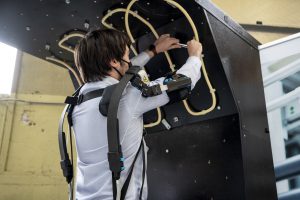
Skelex, passive arm exoskeleto
© Eric de Vries (TNO)
Companies
As the general goal of this workshop was to accelerate the adoption of exoskeletons into construction and industry, companies from these sectors mainly were invited to the workshop. A wide range of employees and/or managers from different occupations attended the workshop, such as tilers, logisticians, rail constructors, painters, floorers, airplane cleaners and concrete workers. In total 15 companies joined the workshop.
Program
“Exobition”
The workshop started with a short introduction by TNO, explaining the goal of the workshop and the course of events. After that, each exoskeleton developer had 2 minutes to pitch their booth and the regarding exoskeleton(s) to the participating companies. Afterwards, the companies shortly introduced themselves, sharing their field of expertise and previous experience with exoskeletons. Subsequently, the companies could walk around for 2 hours, trying on exoskeletons and getting in contact with exoskeleton developers. Besides the exoskeleton booths, posters with statements were hanging in the hall, on which participants could voice their opinion by pasting stickers.

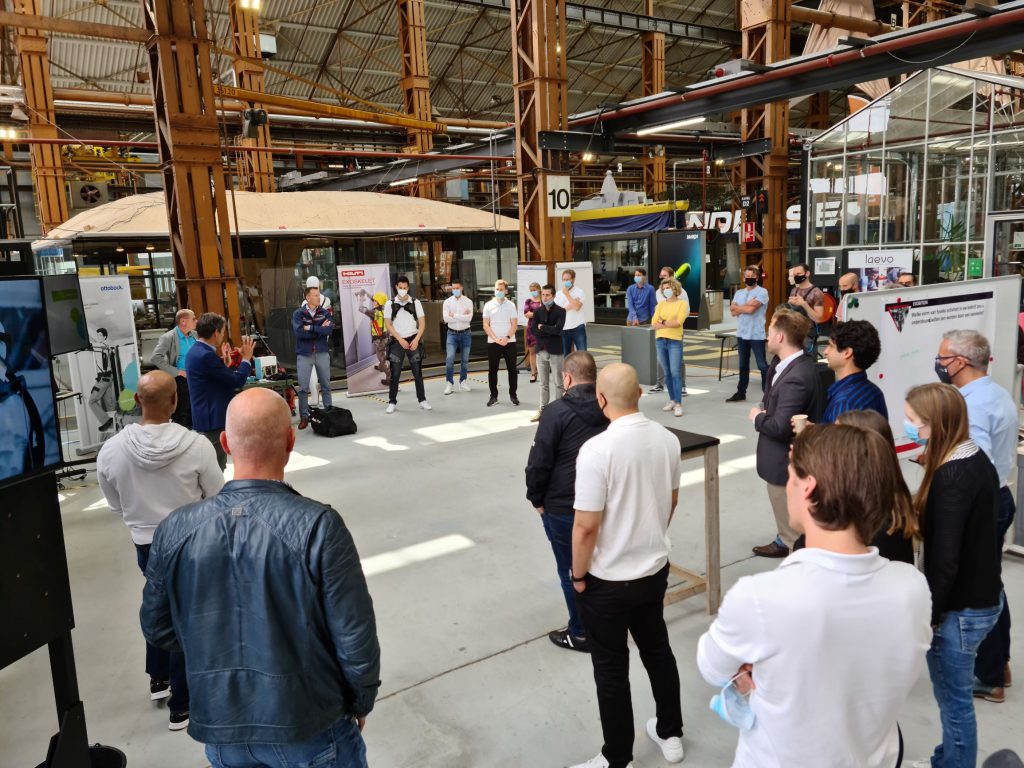
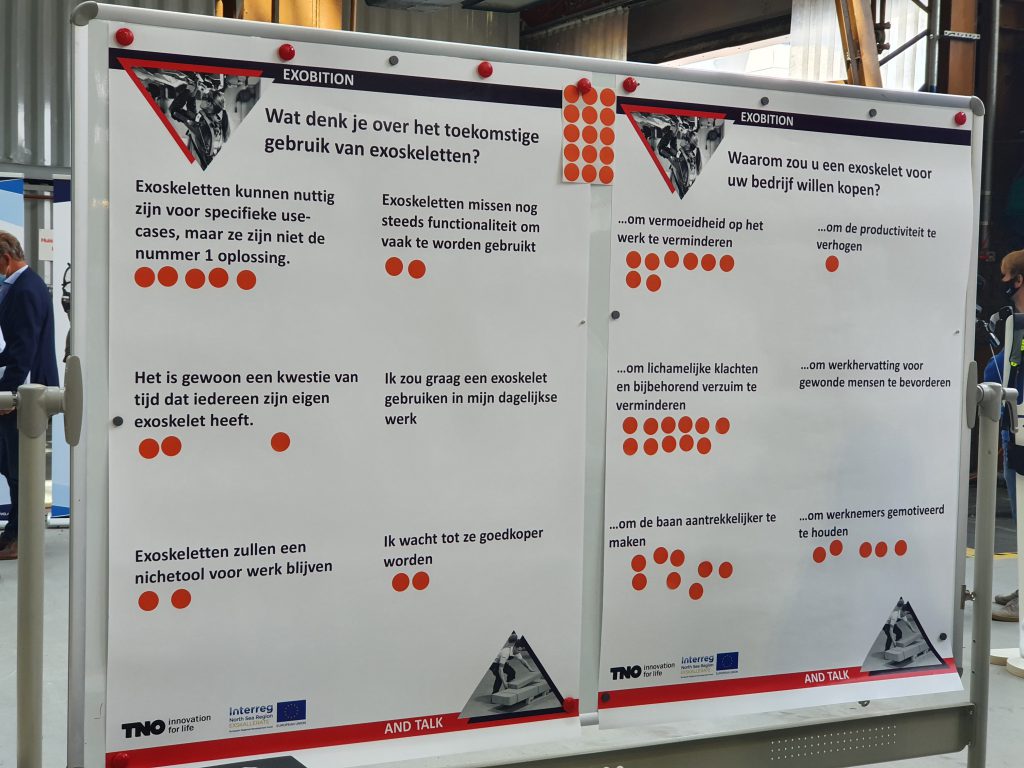
“Talk”
After the open “Exobition” the companies were divided into two groups. One group discussed challenges and barriers for exoskeleton implementation of back exoskeletons, whereas the other group did the same on arm exoskeletons. The companies could decide themselves which group they wanted to join. In these discussions we started by asking for the companies’ positive and negative experience they made with exoskeletons. This could have been experience they collected during the Exobition, but also previous experience they made by e.g. testing an exoskeleton in their working environment. Subsequently, we asked each of the companies to think of a potential use-case in their company that might be feasible to be supported by an exoskeleton. Together with the company we discussed that use-case, by writing down the postures of the employees, the frequency of these postures, and potential factors that might influence acceptance in the working environment.

Outcomes
Besides a network extension and new insights into the current exoskeleton market during the “Exobition”, some direct outcomes can be presented from the discussion rounds with the companies. The following important aspects were collected based on the companies’ experience with exoskeletons:
- Before implementing an exoskeleton, a company should check whether there are more ‘simple’ solutions other than exoskeletons possible
- Making a good analysis of the usability and potential effectiveness of an exoskeleton prior to testing and implementation is important
- Currently existing exoskeletons are quite similar but do show some differences in wearing comfort, motion of freedom, and level of mechanical support
- Good instruction on how to use the exoskeleton and how to adjust the exoskeleton to the user is important
- Be aware of your goal: Is that the health of the employees or the improvement in efficiency?
- To reach a high level of acceptance, the users have to feel the effect of the exoskeleton
- Implementing the exoskeleton in a team might ease the implementation process
Conclusion
With the “Exobition and Talk” we connected exoskeleton developers with companies interested in exoskeletons. We increased the potential end-users’ awareness of exoskeletons as a potential solution. Due to the intensive discussions we could listen to the companies’ challenges, barriers and opinion on exoskeleton implementation. A number of companies (tilers, concrete workers, logistics) showed interest in testing a couple of exoskeletons in their working environment. We therefore have planned several visits to different companies to first observe their working environment and potentially perform field studies with different exoskeletons at a later stage.
